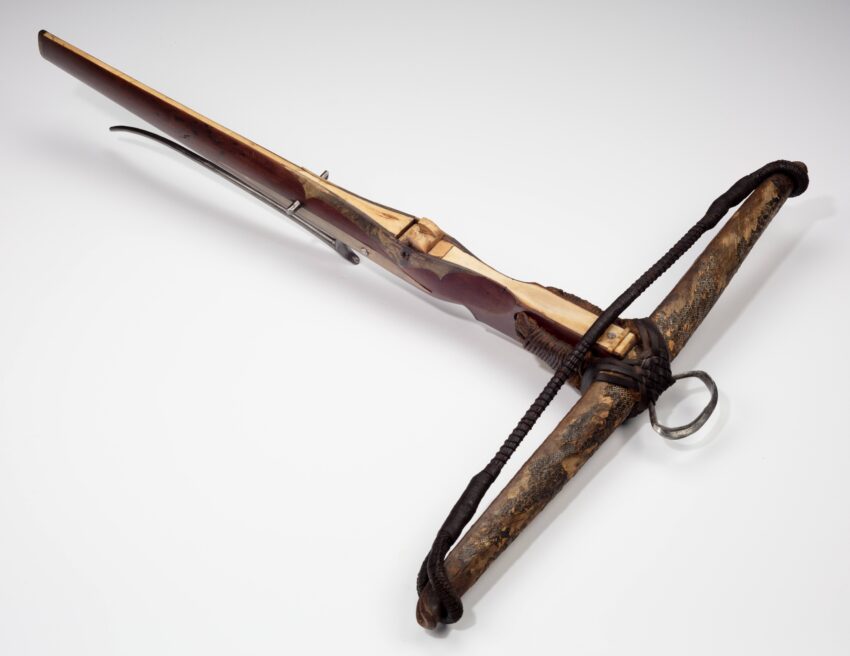In the famous essay,. “How a Man Shall be Armed”, it says to make arming points “muste be made of fyne twyne suche as men make stryngis for crossebowes and they muste be trussid small and poyntid as poyntis. Also they muste be wexid with cordeweneris coode . and than they woll neythir recche nor breke.” This led me to explore how crossbow strings were made at that time (mid-15th century).
In late August, 2024, I had the opportunity to examine a crossbow in the Higgins Armory Collection at the Worcester Art Museum. The catalogue entry indicated that the string on this one was original and not replaced in recent years. Here is a link to the catalogue entry for this crossbow.
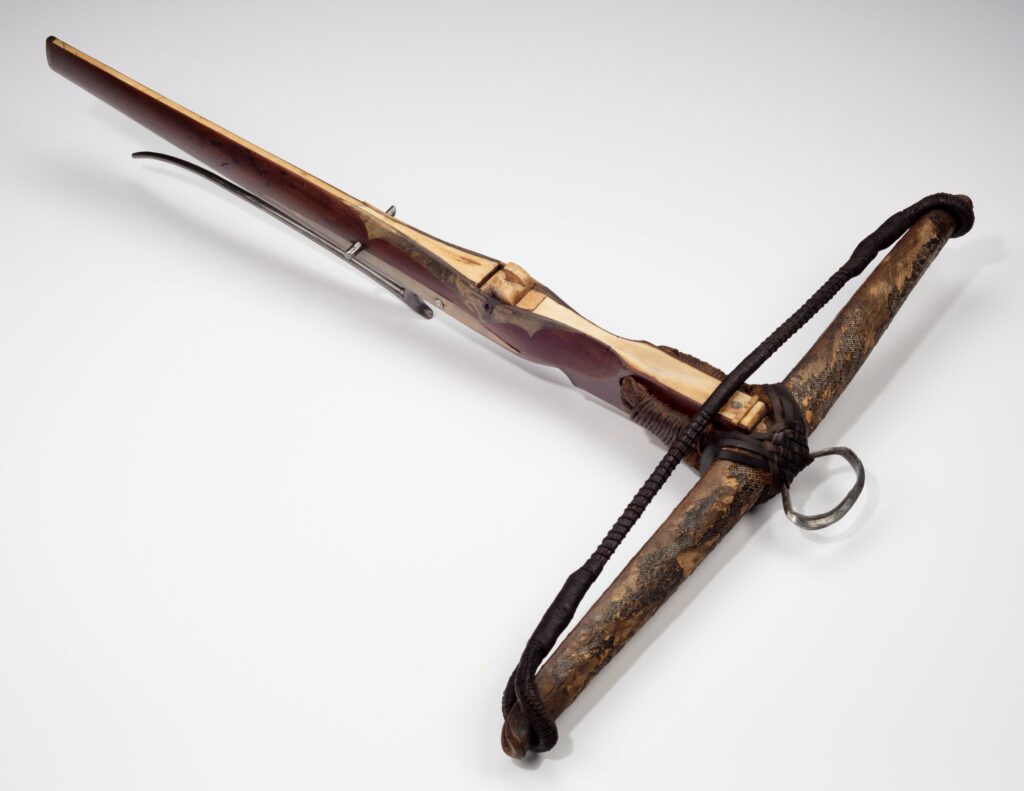
The knotwork seems to closely resemble that shown in “The Crossbow, Mediæval And Modern, Military And Sporting Its Construction, History And Management, With A Treatise On The Balista And Catapult Of The Ancients” by Sir Ralph Payne-Gallwey, regarding a reinforced continuous look bowstring (pp 110-113) but with additional serving where the reinforcement loops connect with the main string.
The crossbow string is entirely covered in a shiny, dark substance. I suspect that it may be a combination of wax and tar, probably applied as a liquid to soak in, much like tarring rigging on a (historical period) sail boat and I presume done for the same reason we wax bowstrings even today – to preserve the string and keep it strong and flexible. The string, though marked as an original and though the crossbow shows signs that it has been used, does not show any obvious signs of use. I suspect the string was a contemporary replacement in the late 15th or 16th century.
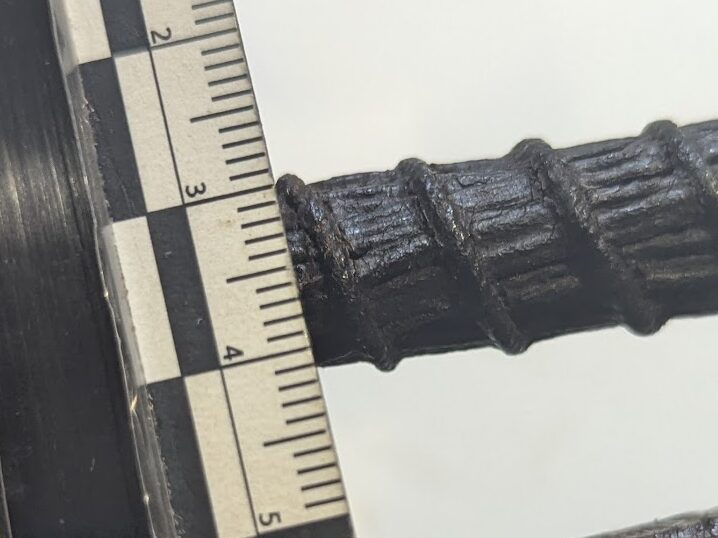
To my eye, the material looks like hemp, though it may be linen. (The string used to bind the prods to the tiller is almost certainly hemp. In both, there are areas where abrasion has removed the coating exposing a medium brown color fiber.) The core is made of many loops of about 0.5-0.8 mm diameter cordage with a fairly loose S twist. The serving looks a little larger than 1mm in diameter and has a tight Z-twist. My guess is that it is likely made of 3 strands of the same cordage as the core, cable twisted together.
The central core is about 1.1cm in diameter.
At the ends, the loops look like they are made as a reinforced continuous loop design with the serving wrapped around the connection.
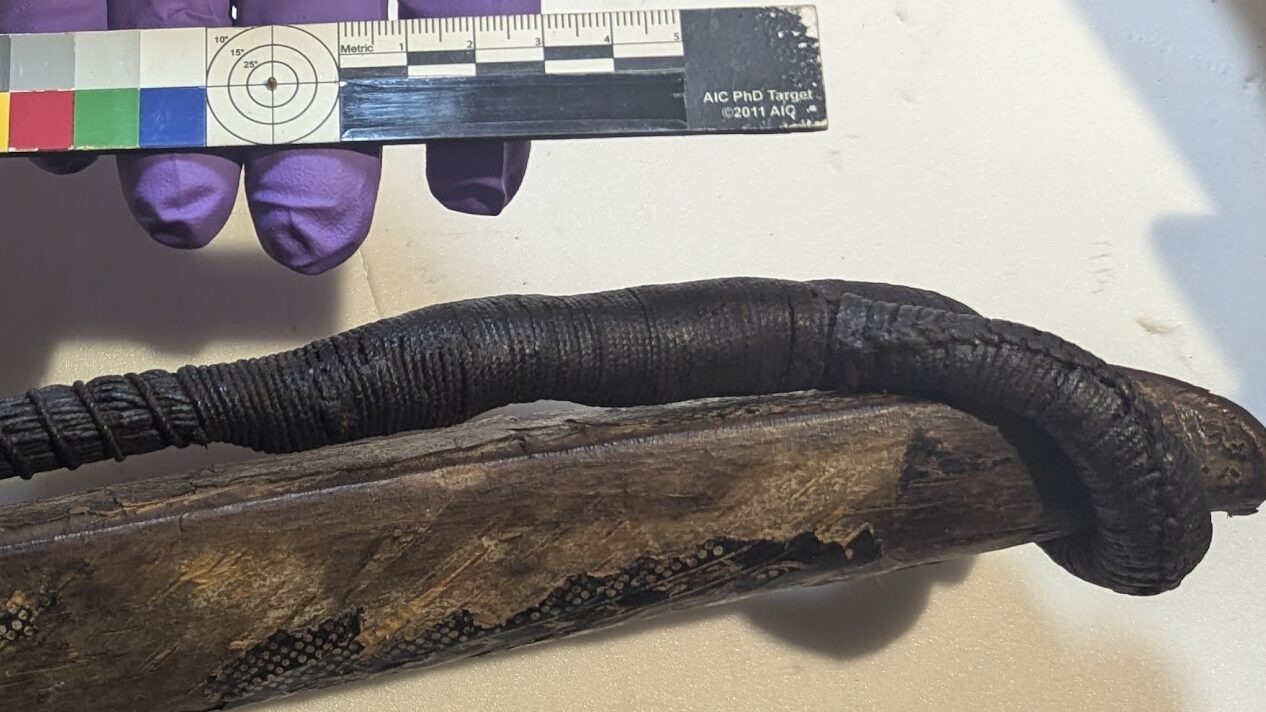
The loop itself is wrapped with with “English coxcombing”, a decorative and protective wrap formed by a series of overhand knots in opposite directions, forming a more or less straight ridge and holding each turn tightly to the next. (A variation called “French coxcombing” does not alternate the direction of the overhand knots and results in a spiral ridge. Both are common in nautical knotwork, especially around handles and hand rails.) From the bottom of the loop to about 12-14 mm down the main string, the serving is a simple wrap, bound tightly around and closely wrapped.
From there to the central serving, the wrap spirals in a wider pattern just holding the bundle together.
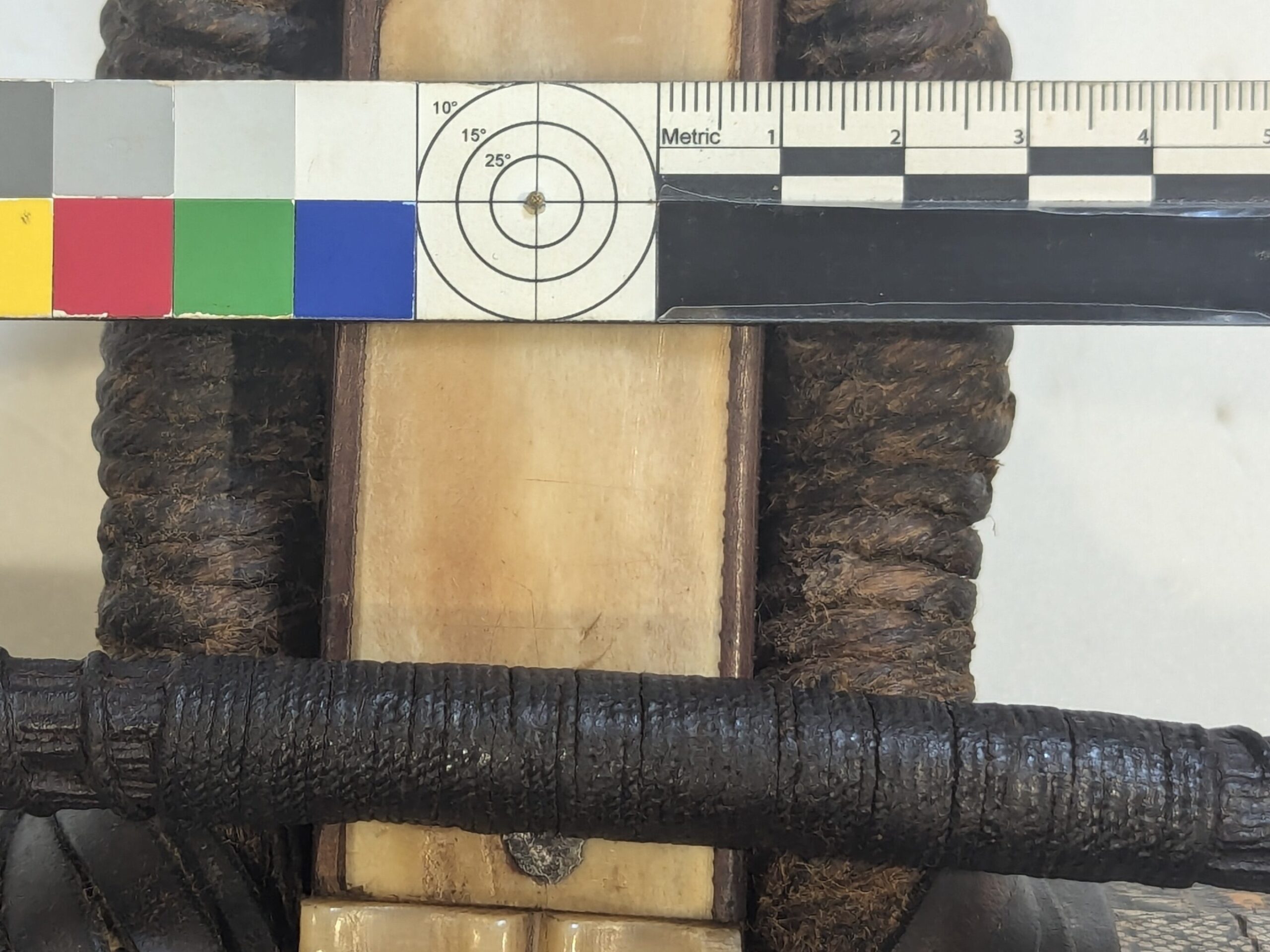
In the center of the string, for about 8.2 cm (not fully centered in the original) the serving wraps tightly again and then continues the looser spiral until it returns to the tight spiral protecting the far loop.
While not part of the bowstring, itself, I should take a moment here to describe how the prods were lashed to the tiller.
The string used looks to be hemp to me, based on fibers and color where the surface has been abraded. It seems to be a less polished cord of about 3.5mm in diameter, with an S-twist. The lashing seems to be consistent with the Payne-Gallwey book, pp 66-69. There, the author suggests using sinew for the lashing, but this crossbow looks to have used hemp as far as I can tell. Like the bowstring, this cord seems to have been coated (not as perfectly) in the same shiny substance that might be very dusty/dirty beeswax or a combination of beeswax and pine tar.
Getting back to the reason I went deeply into this research, let’s look at the “How a Man…” text describes how to make arming points once more:
the armynge poyntis muste be made of fyne twyne suche as men make stryngis for crossebowes and they muste be trussid small and poyntid as poyntis. Also they muste be wexid with cordeweneris coode . and than they woll neythir recche nor breke.
Previous scholars have interpreted “trussid small” as gathering the points into bundles, but I disagree. The order here matters. With the cordage for crossbow strings only 0.5-0.8mm, a single strand is way too think and not strong enough to make an effective arming point. From trial and error, I’ve found that twisting 4 strands of this size cordage into a thicker string does, indeed, make a fine arming point. As such, my interpretation is that the essay says to use the cord used for crossbow strings and twist a number of strands of this together and then add the aglets to the ends to make points. Pulling these through cordwainers coode to wax them does make the knots hold better and preserves the string for much longer usage.
